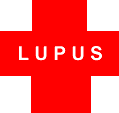
Sjogren's Syndrome
CereBel Health
Autoimmune Diseases
New York, NY
Sjögren's syndrome is an autoimmune disorder in which immune cells attack and destroy the exocrine glands that produce tears and saliva. It is named after Swedish ophthalmologist Henrik Sjögren (1899-1986), who first described it. Sjögren's syndrome is also associated with rheumatic disorders such as rheumatoid arthritis, and it is rheumatoid factor positive in 90 percent of cases. The hallmark symptoms of the disorder are dry mouth and dry eyes (part of what are known as sicca symptoms). In addition, Sjögren's syndrome may cause skin, nose, and vaginal dryness, and may affect other organs of the body, including the kidneys, blood vessels, lungs, liver, pancreas, and brain. Nine out of ten Sjögren's patients are women and the average age of onset is late 40s, although Sjögren's occurs in all age groups in both women and men. It is estimated to strike as many as 4 million people in the United States alone making it the second most common autoimmune rheumatic disease.
Diagnosis
Diagnosing Sjögren’s syndrome is complicated by the range of symptoms a patient may manifest, and the similarity between symptoms from Sjögren's syndrome and those caused by other conditions. Nevertheless, several tests can confirm a diagnosis of Sjögren's syndrome.
Blood tests can be done to determine if a patient has high levels of antibodies that are indicative of the condition, such as anti-nuclear antibody (ANA) and rheumatoid factor, which are associated with autoimmune diseases. Typical Sjögren syndrome ANA patterns are SSA/Ro and SSB/La, of which SSB/La is far more specific; SSA/Ro is associated with numerous other autoimmune conditions but are often present in Sjögren's (Franceschini & Cavazzana I 2005).
The Schirmer test measures the production of tears: a strip of filter paper is held inside the lower eyelid for five minutes, and its wetness is then measured with a ruler. A slit-lamp examination is done to look for dryness on the surface of the eye. Salivary gland function can be tested by collecting saliva and determining the amount produced. A lip biopsy can reveal lymphocytes clustered around salivary glands, and damage to these glands due to inflammation.
There is neither a known cure for Sjögren's syndrome nor a specific treatment to permanently restore gland secretion. Instead, treatment is generally symptomatic and supportive. Moisture replacement therapies such as artificial tears may ease the symptoms of dry eyes (some patients with more severe problems use goggles to increase local humidity or have punctal plugs inserted to help retain tears on the occular surface for a longer time). Additionally, Cyclosporine (Restasis®) is available by prescription to help treat chronic dry eye by suppressing the inflammation that disrupts tear secretion. Prescription drugs are also available that help to stimulate salivary flow, such as cevimeline (Evoxac™) and pilocarpine (Salagen™). Nonsteroidal anti-inflammatory drugs may be used to treat musculoskeletal symptoms. For individuals with severe complications, corticosteroids or immunosuppressive drugs may be prescribed. Also, disease-modifying antirheumatic drugs (DMARDs) such as methotrexate may be helpful.
Prognosis
Sjögren's can damage vital organs of the body with symptoms that may plateau, worsen, or go into remission. Some people may experience only the mild symptoms of dry eyes and mouth, while others go through cycles of good health followed by severe disease. Many patients are able to treat problems symptomatically. Others are forced to cope with blurred vision, constant eye discomfort, recurrent mouth infections, swollen parotid glands, hoarseness, and difficulty in swallowing and eating. Debilitating fatigue and joint pain can seriously impair quality of life.
Epidemiology
Sjogren's syndrome affects 1-4 million people in the United States. Most people are more than 40 years old at the time of diagnosis. Women are 9 times more likely to have Sjogren's syndrome than men.
|
Have a question about Sjorgen's Syndrome?
Have it answered by our community. Try our new "Ask and Answer" beta service.
Click here to ask Question. |
(c) Copyright 1996-2006. No portion may be used,
reprinted, emailed, published, placed on the world wide web, or disseminated electronically without the permission of the author. ALL INFORMATION IS PROVIDED AS A PUBLIC SERVICE AND NO WARRANTY IS EXPRESSED OR IMPLIED.
DOCTORS interested in having a HOMEPAGE?
Email docpages@cerebel.com for information.

